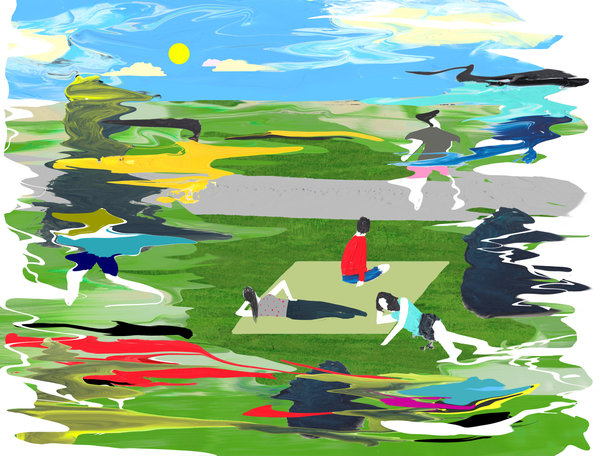By FRANK PARTNOY
WHEN the Supreme Court announced its decision on the Affordable Care Act last month, the media went wild. The rush to judgment took seconds. CNN and Fox News initially described the decision incorrectly, saying five justices had struck down the law. Even after corrections, the snap analysis that followed wasn’t very helpful. The multipart decision is complex, and its ramifications will take months or even years to understand.
The blink response to this case is only the latest example of a troubling increase in the speed of our reactions. E-mail, social media and the 24-hour news cycle are informational amphetamines, a cocktail of pills that we pop at an increasingly fast pace — and that lead us to make mistaken split-second decisions. Economists label the problem “present bias”: we are vulnerable to fast, salient stimulation.
Fortunately, there is an antidote: the conscious pause. Scientists have found that although we are prone to snap overreactions, if we take a moment and think about how we are likely to react, we can reduce or even eliminate the negative effects of our quick, hard-wired responses. For example, countless studies have shown that physicians’ immediate, unconscious reactions to racial minorities lead them to undertreat black patients. In one study published in the Journal of General Internal Medicine in 2007, researchers asked several hundred doctors about a hypothetical 50-year-old male patient who showed up with chest pain. The researchers gave the doctors a photograph of the man, randomly varying his race. Half saw him as white; half saw him as black.
Sure enough, although the doctors insisted they were not racially biased, they were more likely to prescribe thrombolysis, an anti-blood-clotting procedure, for the white patient, while giving the black patient a less-aggressive prescription. The doctors didn’t appear racist, yet their unconscious snap reactions led them to treat blacks differently — the very definition of racism.
However, about one in four of the doctors guessed that the study was designed to test racial bias. They stopped for a moment and considered how they might react differently depending on race. The researchers found that this “aware” subgroup did not treat patients differently. Once they paused to consider whether race was an issue, race was no longer an issue.
Snap decisions can be important defense mechanisms; if we are judging whether someone is dangerous, our brains and bodies are hard-wired to react very quickly, within milliseconds. But we need more time to assess other factors. To accurately tell whether someone is sociable, studies show, we need at least a minute, preferably five. It takes a while to judge complex aspects of personality, like neuroticism or open-mindedness. If we need to understand how nine justices resolved a difficult legal issue, we need even more time.
But snap decisions in reaction to rapid, even subliminal stimuli aren’t exclusive to the interpersonal realm. Sanford DeVoe and Chen-Bo Zhong, psychologists at the University of Toronto, found that viewing a fast-food logo for just a few milliseconds primes us to read 20 percent faster, even though reading has little to do with eating. We unconsciously associate fast food with speed and impatience and carry those impulses into whatever else we’re doing. Subjects exposed to fast-food flashes also tend to think a musical piece lasts too long.
Yet we can reverse such influences. If we know we will overreact to consumer products or housing options when we see a happy face (one reason good sales representatives and real estate agents are always smiling), we can take a moment before buying. If we know female job screeners are more likely to reject attractive female applicants, as a study by the economists Bradley Ruffle and Ze’ev Shtudiner shows, we can help screeners understand their biases — or hire outside screeners.
John Gottman, the marriage guru made famous in Malcolm Gladwell’s best-selling book “Blink,” explains that we quickly “thin slice” information reliably only after we ground such snap reactions in “thick sliced” long-term study. When Dr. Gottman really wants to assess whether a couple will stay together, he invites them to his island retreat for a much longer evaluation: two days, not two seconds.
Our ability to mute our hard-wired reactions by pausing is what differentiates us from animals: primates and dogs can think about the future only intermittently or for a few minutes. But historically we have spent about 12 percent of our days contemplating the longer term.
The beginning of summer is supposed to be the time for us to slow down and take a breath. Go to the beach with a few books. Spend downtime with family. Tune out. But instead of jumping into the swimming pool, we have leapt into a whirlpool of news.
Still, although technology might change the way we react, it hasn’t changed our nature. We still have the imaginative capacity to rise above temptation and reverse the high-speed trend. There are a couple of summer months left, and no time to waste.
Frank Partnoy is a law professor at the University of San Diego and the author of “Wait: The Art and Science of Delay.”
See online: Beyond the Blink

